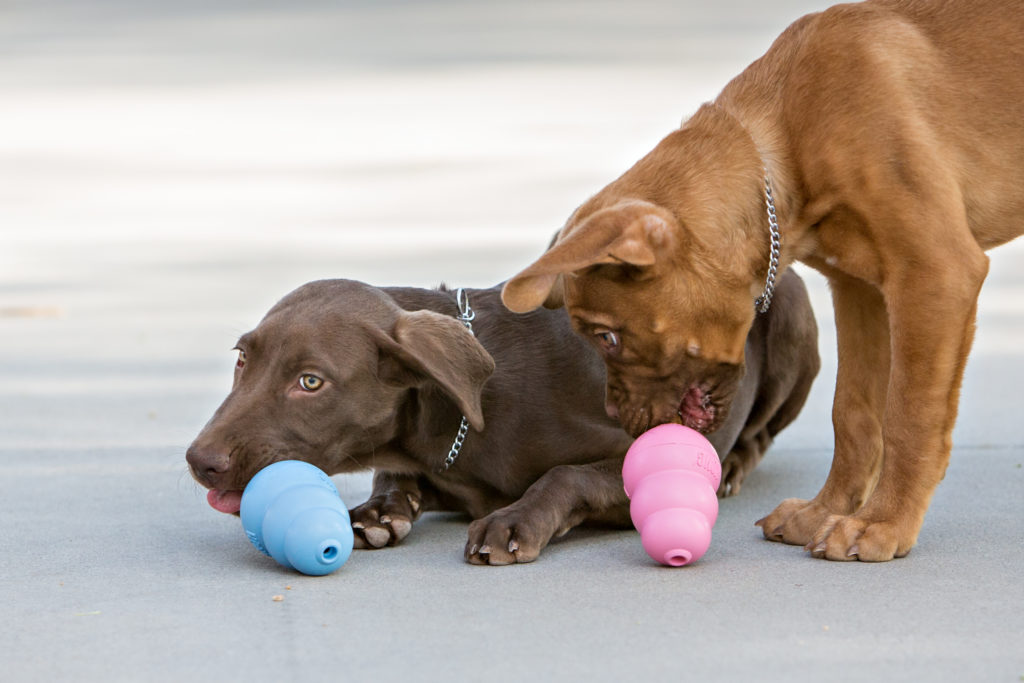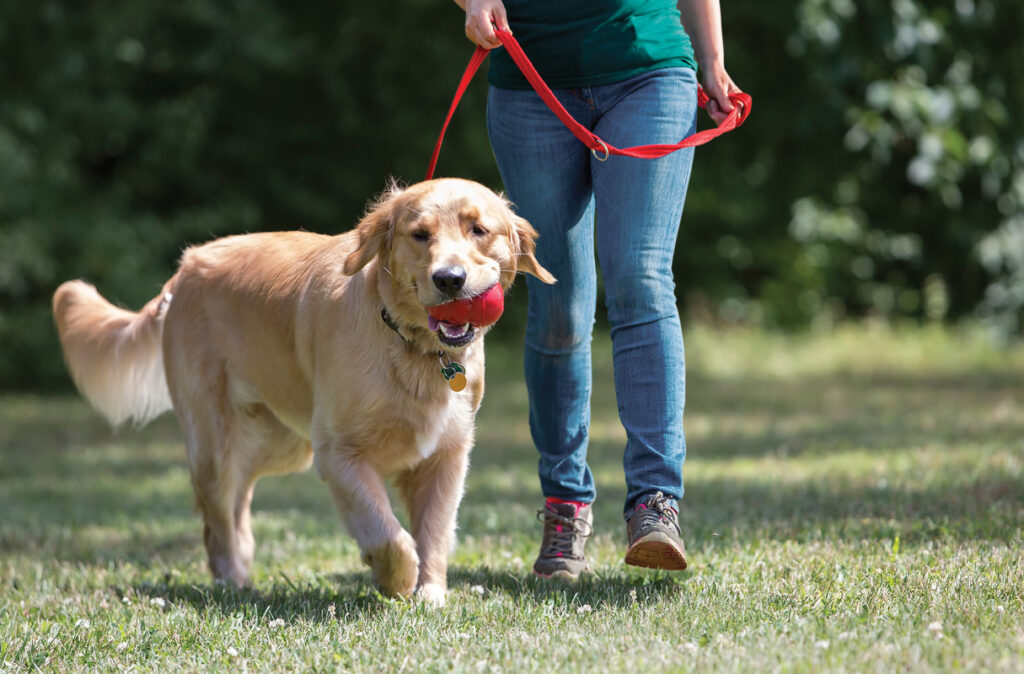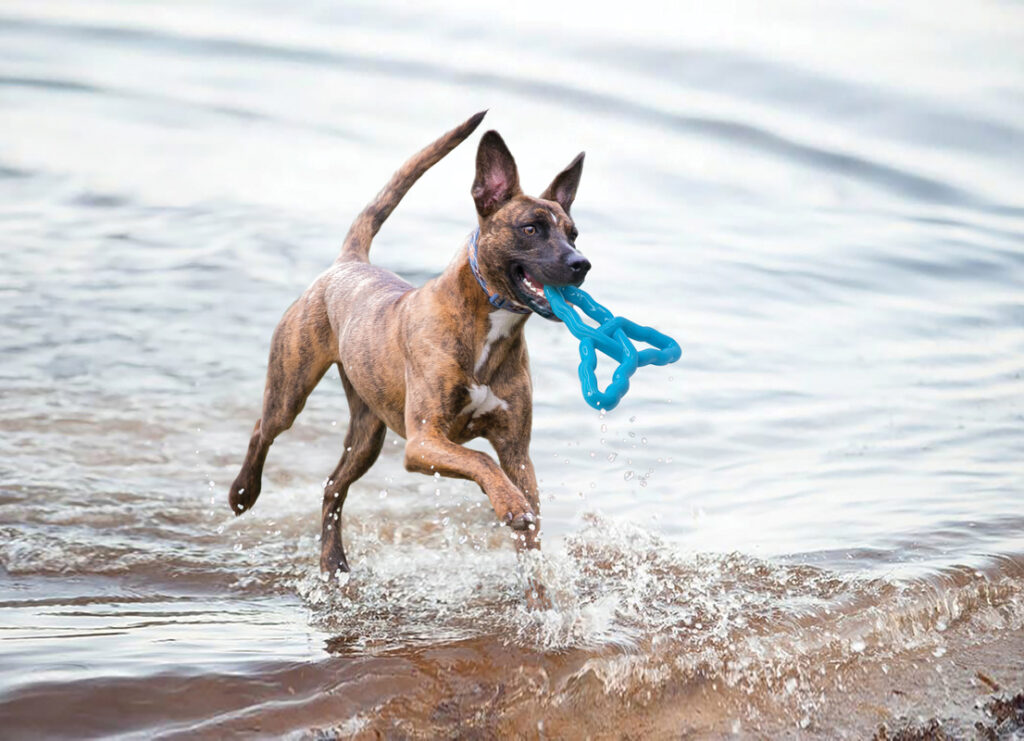As you are well aware, your dog is a fast friend and prized member of your family. For many, having more than one dog is a way to give your dog a companion for when you are not able to be at home. Many people joke and say they are “getting a dog for their dog” to keep them company.
If you love the idea of more than one wagging tail in the house and a welcoming committee waiting at the door when you come home from a long day, you may consider getting a puppy. When your household grows by four more paws, the most important introduction to prepare for is how to introduce a new puppy to your current dog.
Puppy Preparations
When you know you are bringing a new puppy home, proactive preparations are the best bet for your puppy and older dog to have a successful introduction. You want your pets to become the best of pals who can enjoy each other’s company. This gives you peace of mind, so you will not have to worry about unfriendly spats in the home.
One important preparation is ensuring that your puppy has been adequately socialized. From three to fourteen weeks of age, your puppy should have ample time to play with their littermates. This playtime helps to enforce what behaviors are safe and unsafe. They also facilitate learning behavioral cues that help your puppy know what behavior is okay to have with other dogs.
Your puppy should also be exposed to as many external stimuli as possible during this period, like car rides, walking in the grass, and hearing loud noises.
This socialization is important for later relationships with humans and other dogs. In fact, lack of socialization can cause behavior problems that cause dogs to be handed over to shelters, such as fear and aggression.
Socialization of older dogs should be a careful process and may require some assistance from behavioral specialists to help resolve. Even then, older dogs who did not receive adequate socialization as a puppy may not be able to coexist with another dog in the home.
Even before three weeks of age, your puppy should have been gently handled daily by their human caretakers. This daily handling helps your puppy to behave more calmly and have a reduced fear of humans. Even after bringing your socialized puppy home, continuing to expose your puppy to new people, places, and other pets helps to reinforce positive behaviors and bonding.
Scent Swapping
If you are waiting to bring your puppy home until they have been weaned and are big enough, you can use this to your advantage for a successful future introduction. When you go to pick out your puppy or check on them in person, you can bring home a towel or blanket that your puppy has laid on.
Allowing your older dog to sniff on the towel or blanket that has your puppy’s scent gives your dog a mini introduction to your puppy.
If you are not able to bring home a puppy-scented object, this is quite alright; your puppy and older dog can still have a successful introduction.
Visual Introduction
Allowing your dogs to see each other, but not physically meet, is a more controlled way to allow your dogs to meet each other. This can be done if you were not able to swap scents or if your older dog is likely to be too overwhelmed at a new puppy getting up close and personal. In this case, you will want to take more gradual steps.
To allow your new puppy and older dog to get used to each other, using a baby gate can allow them to see and sniff each other but not allow full physical access. You can also place your puppy in a crate and let your older dog approach and sniff.
Keep things upbeat and happy, and offer treats and praises to both your puppy and older dog to create a positive association.
Neutral Ground
The best introductions happen on neutral ground. An enclosed area is best so that you can permit your puppy and dog to roam freely. Leave their leashes on in case you need to separate the dogs. Having a second person to help with this introduction is a major help.
Of course, we know that your older dog just loves their favorite treat and praises from you. Incorporate both treats and positive praises as your puppy and dog meet each other. Your dog can read your mood, and keeping things positive is vital for a successful introduction.
The two may ignore each other at the beginning, but it is likely that your playful pup will have already noticed your older dog and will want to be friendly and say hello. Good introduction cues include wagging tails, rear-end sniffs, play bowing, and your puppy rolling on their back. Your puppy cueing this behavior is a sign of submission and shows that they know the older dog is in charge.
Keep an eye on your older dog’s body language, and knowing what to do in the event your older dog becomes aggressive is a preparation that is important to make. If any aggressive behavior is observed, separate the two dogs right away. Aggressive behavior cues include hair raising on their back, growling, wrinkled forehead and nose, a non-wagging tail.
As long as things are going well, end this part of the introduction after five to ten minutes.
Keep Things Moving
After the initial introduction, keep things moving by doing an activity together, like going on a walk. If you know of an area that other dogs frequent (and everyone’s caught up on their vaccines), taking a walk at this location can be a quick way to bond. There are lots of smells to sniff, and truly no better bonding can be had than sniffing a particularly stinky spot together!
Taking It Home
After a nice stroll together, going home is a crucial step as your older dog may be a little territorial about their belongings, like their bed and food dishes. Also, put any toys away that your dog had before the puppy.
Until your puppy has a hang of how things are done in their new house, keep all of their food dishes separate. Give both your dog and puppy separate areas to hang out and relax. If you crate train, it may be helpful to put their crates in different areas for the first few weeks.
Don’t allow your puppy and older dog to spend time together unsupervised. As we know, puppies can be extremely playful. If you have a senior dog, they may just want to spend their time snoozing. A playful pup and snoozing senior may not be the best recipe for success, especially if it occurs out of your watchful gaze.
Utilizing a baby gate is especially helpful during those times when you are home but cannot carefully supervise both your puppy and older dog together. This allows both dogs to be out and about in the home but not to be in their crates.
As your puppy grows and matures, you can start to gradually allow your pets to spend time together unsupervised, as long as no aggressive behaviors have been observed. A critical factor in this unsupervised time is that no food is left out. Some dogs can become quite territorial over their food dishes.
Furry Friends
Sometimes dog behaviors can be tricky to interpret, especially when you have multiple dogs in the house. The animal behaviorists, dietitians, and veterinarians from AskVet in the KONG Club app are here for you whenever you have questions about dog interactions and behaviors — 24 hours a day, seven days a week!
You can also reach out to other dog parents and experts in the KONG Clubhouse for advice from those who have been in the very position you’re in now .
It may take some time, but with consistency and guidance on your behalf your new puppy and your older dogs will develop a wonderful bond. Before you know it, you’ll be taking picture after picture of your puppy and dog snuggling together on the couch.
Sources:
Puppy parties and beyond: the role of early age socialization practices on adult dog behavior | NCBI
AVSAB Position Statement On Puppy Socialization | American Veterinary Society of Animal Behavior
Canine Communication Interpreting Dog Language | VCA Animal Hospitals



